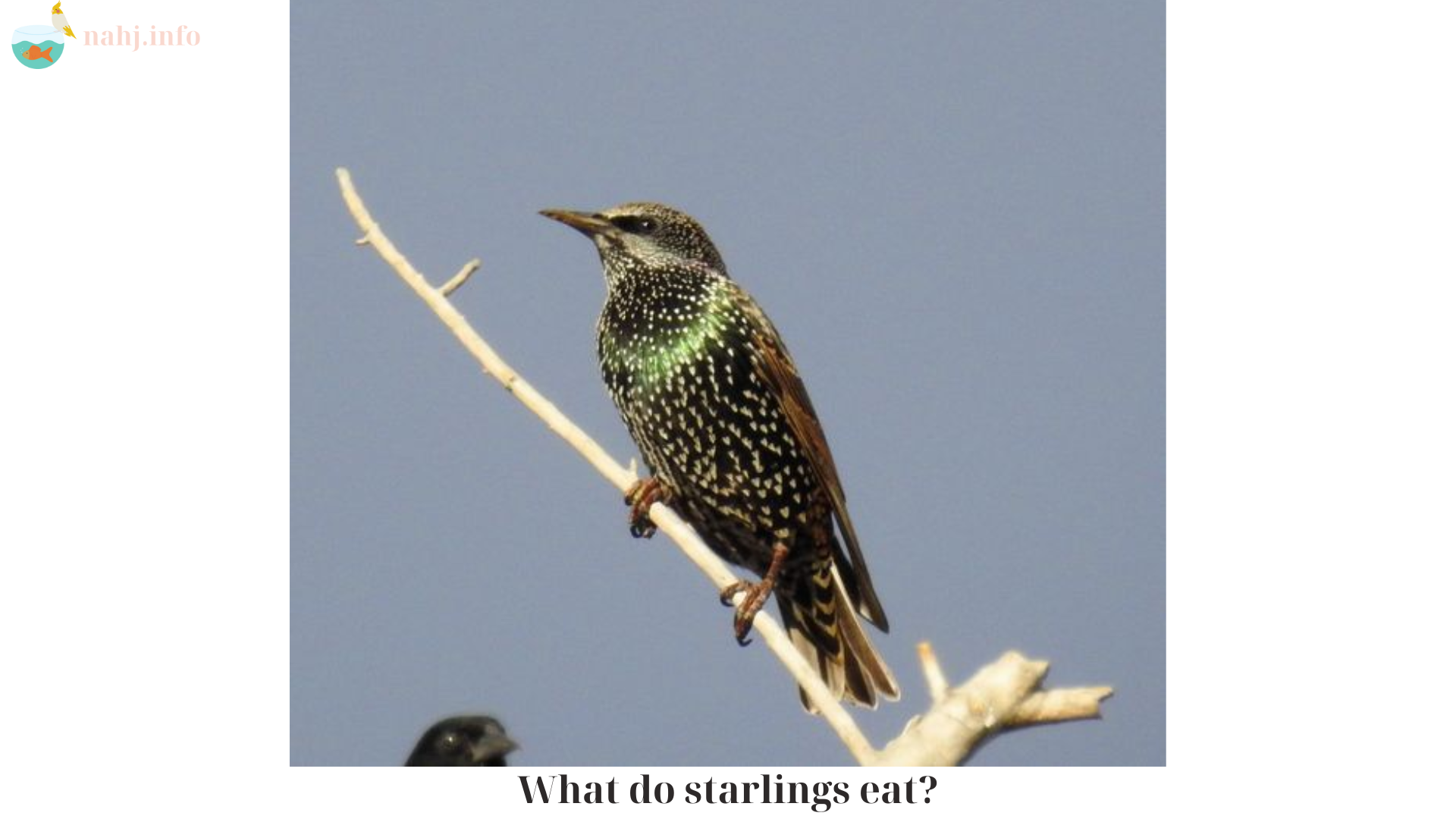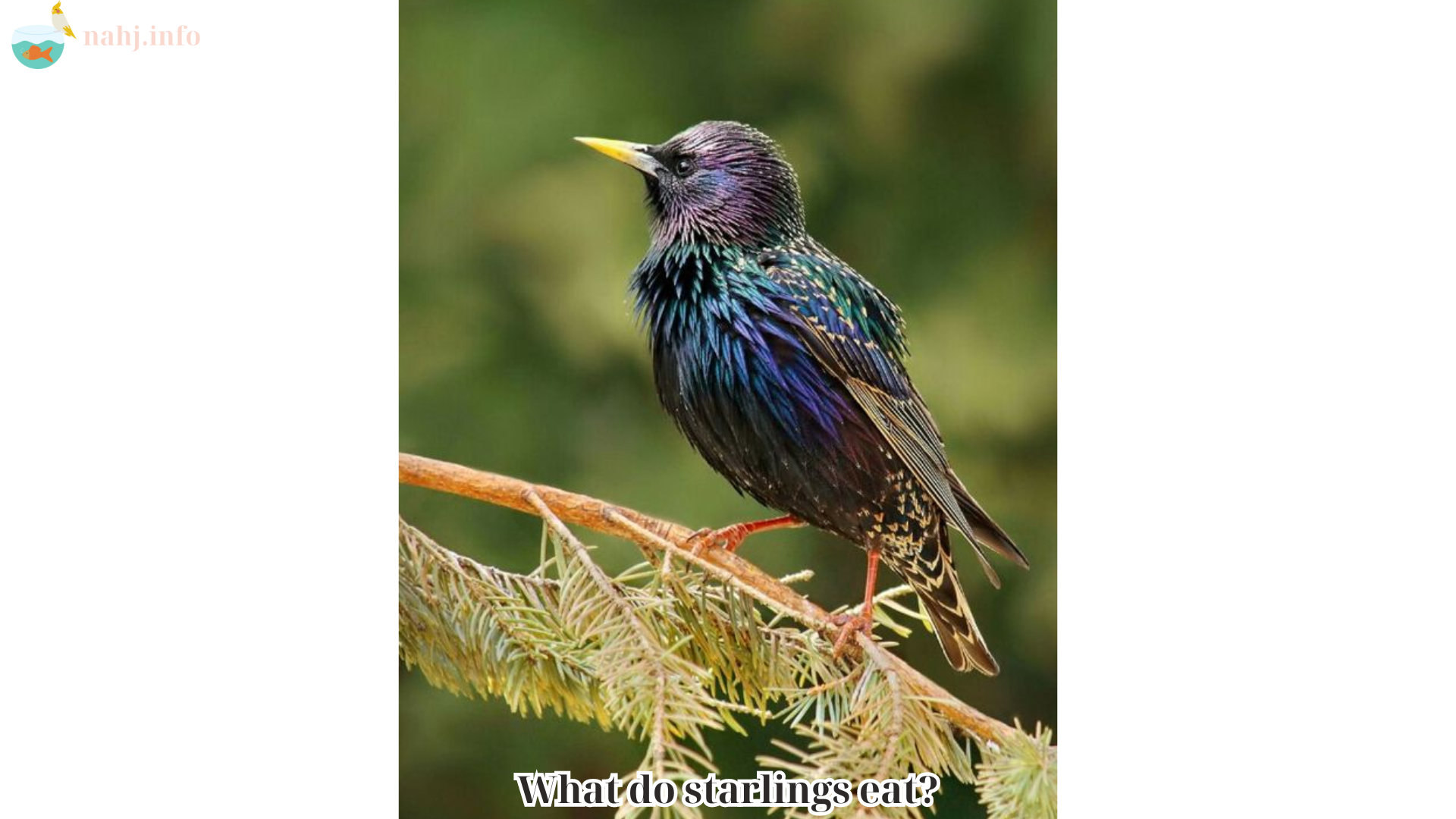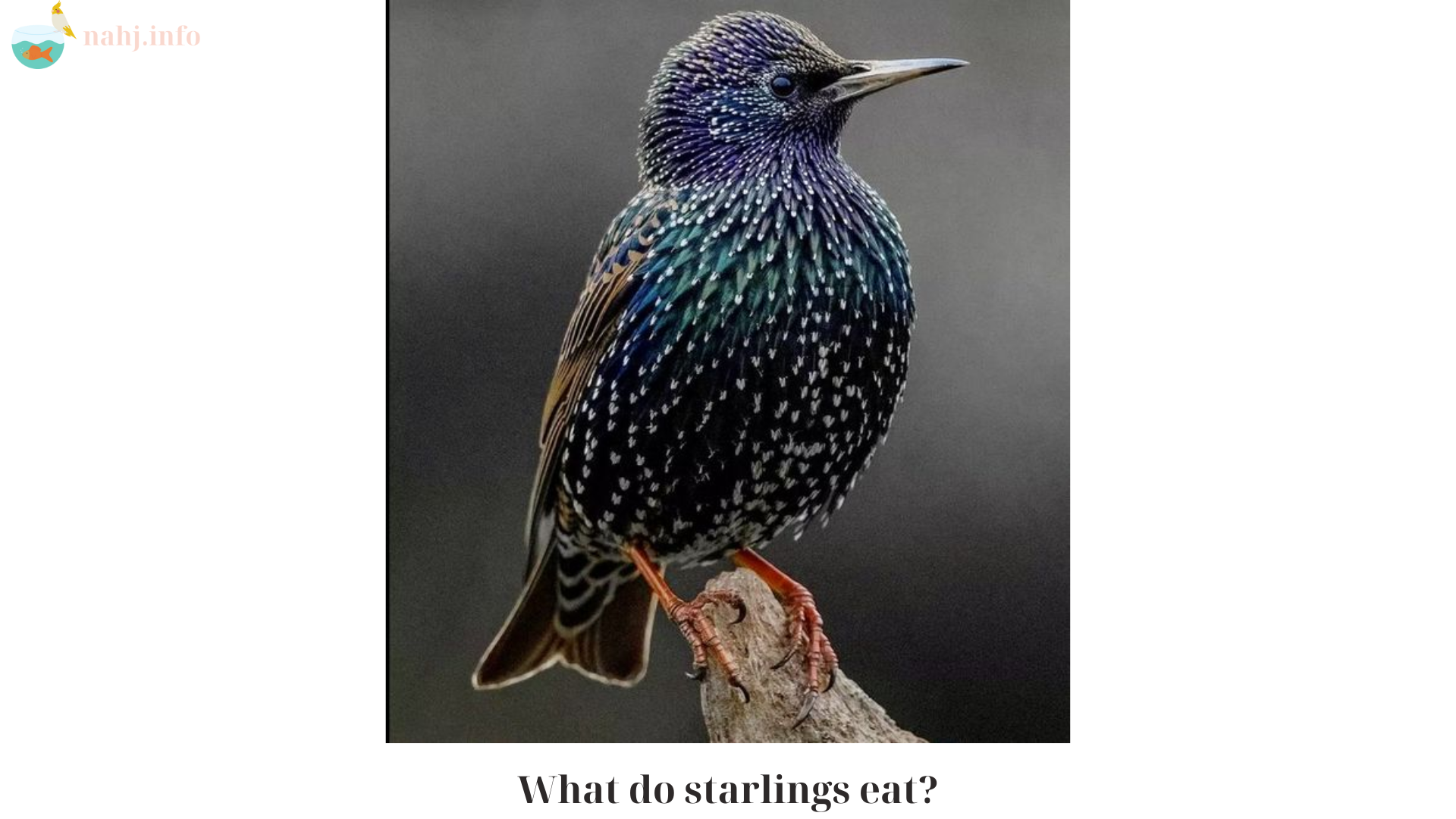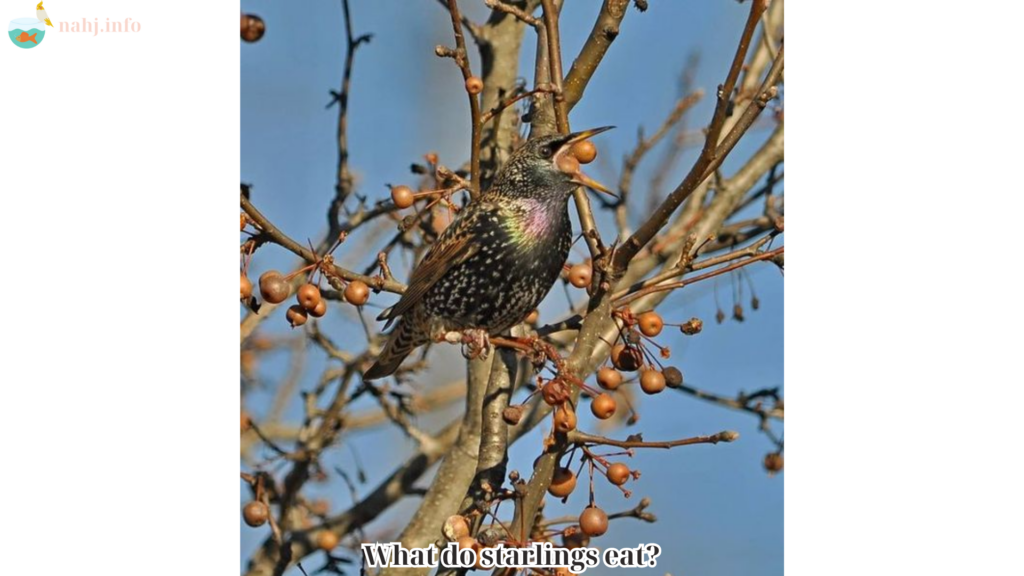Starlings, known for their iridescent plumage and acrobatic flight patterns, are fascinating birds that have adapted to a wide range of environments. Understanding their dietary habits is essential for bird enthusiasts, wildlife rehabilitators, and anyone interested in the natural world. This comprehensive guide by Nahj explores what starlings eat, how their diet varies seasonally, and what you can do to attract these birds to your backyard.
Table of Contents
ToggleWhat Do Starlings Eat? A Comprehensive Guide

Identification
Starlings are medium-sized passerine birds that belong to the family Sturnidae. The European Starling (Sturnus vulgaris) is the most well-known species, introduced to North America in the 19th century. These birds are easily recognizable by their speckled black and white feathers, which can appear iridescent green and purple in the right light.
Habitat and Distribution
Starlings are highly adaptable and can be found in various habitats, including urban areas, farmlands, grasslands, and woodlands. They are native to Europe, Asia, and Africa but have established populations in North America, Australia, and New Zealand.
Natural Diet of Starlings
Insects and Invertebrates
One of the primary food sources for starlings is insects and other invertebrates. They have a preference for:
- Beetles: Starlings consume both adult beetles and their larvae, which are rich in protein.
- Grasshoppers and Crickets: These insects provide essential nutrients and are abundant during warmer months.
- Caterpillars and Moths: Starlings often feed on caterpillars and moths, particularly during the breeding season when they need to nourish their chicks.
- Spiders: An important part of their diet, spiders offer a high-protein food source.
- Earthworms: Starlings are known to probe the soil with their beaks to extract earthworms.
Fruits and Berries
Starlings also consume a variety of fruits and berries, especially when insect prey is scarce. Common fruits and berries in their diet include:
- Cherries: Starlings are notorious for raiding cherry orchards.
- Blackberries and Raspberries: These berries provide essential vitamins and sugars.
- Elderberries: A favorite among starlings, elderberries are rich in antioxidants.
- Apples and Pears: Fallen fruit in orchards and gardens often attracts starlings.
Seeds and Grains

During the colder months, when insects and fruits are less available, starlings turn to seeds and grains. They forage for:
- Sunflower Seeds: High in fat and energy, sunflower seeds are a popular choice.
- Corn and Wheat: Starlings often feed on leftover grains in agricultural fields.
- Millet and Sorghum: These small seeds are easy for starlings to eat and digest.
Human Food Sources
Starlings are opportunistic feeders and have adapted to urban environments by exploiting human food sources. They scavenge:
- Bread and Pastries: Leftover bread and pastries are common targets.
- Pet Food: Starlings often raid pet food bowls left outside.
- Food Scraps: Any food scraps discarded in urban areas can attract starlings.
Seasonal Variations in Diet
Spring and Summer
In spring and summer, starlings’ diets are dominated by insects and invertebrates. This period coincides with the breeding season, and the protein-rich diet is crucial for raising healthy chicks. During these months, starlings can often be seen foraging on lawns, fields, and meadows, probing the ground for worms and insects.
Autumn
As the weather cools and insect populations decline, starlings shift their diet towards fruits and berries. Autumn is a time of plenty for fruiting trees and shrubs, providing starlings with an abundant food source. They are particularly fond of berries, which offer essential vitamins and sugars needed for migration and energy.
Winter
Winter poses a challenge for starlings, as their preferred insect prey is scarce. During this time, they rely heavily on seeds, grains, and any available human food sources. Flocks of starlings often gather in agricultural areas to feed on leftover grains and in urban areas where food scraps are more accessible.
Attracting Starlings to Your Backyard

If you want to attract starlings to your backyard, providing a variety of food sources is key. Here are some tips:
Bird Feeders
- Seed Mixes: Offer a mix of sunflower seeds, millet, and cracked corn.
- Suet Cakes: High-energy suet cakes attract starlings, especially in winter.
- Fruit Feeders: Provide fresh or dried fruits such as apples, berries, and grapes.
Natural Food Sources
- Fruit Trees and Shrubs: Planting fruit-bearing trees and shrubs can attract starlings. Consider varieties like elderberries, blackberries, and cherries.
- Compost Piles: Maintaining a compost pile can attract insects and worms, which starlings will forage for.
Water Sources
Starlings need a reliable water source for drinking and bathing. A birdbath or shallow pond can attract them, especially in hot weather.
Managing Starling Populations
While starlings can be beneficial by controlling insect populations, they can also become a nuisance, particularly in urban areas and farmlands. Here are some management strategies:
Preventing Overpopulation
- Limit Food Sources: Avoid leaving pet food outside and secure trash bins to reduce scavenging opportunities.
- Netting and Barriers: Use netting to protect fruit trees and crops from starling raids.
Providing Alternative Habitats
- Nest Boxes: Install nest boxes designed for native bird species to provide alternative nesting sites and reduce competition with starlings.
- Habitat Management: Create diverse habitats in your garden to attract a variety of bird species, reducing the dominance of starlings.
Conclusion
Starlings are versatile and opportunistic feeders with a diet that changes with the seasons. By understanding what starlings eat and how to provide for their needs, you can attract these fascinating birds to your backyard while also managing their populations effectively. Whether you are a birdwatching enthusiast or a gardener looking to control pests, knowing more about starlings’ dietary habits can enhance your appreciation and interaction with these adaptable birds.

